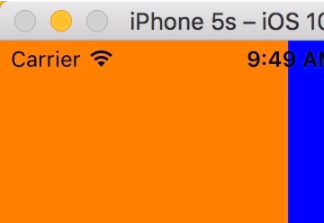开篇
今天在修改项目的时候,看见enum中出现了<<操作符(位操作),之前对这个一直都不了解。这次趁着项目比较清闲,抽出时间来全面了解一下位操作。
位操作
位操作是对二进制数逐位进行运算或移位。它共包含两种操作:位运算和移位。下面就详细的了解一下这两种操作。
在此只讨论iOS中的所有位操作的运算符,别的语言的相同含义的操作符号可能不同
位运算符(以下操作符皆同Objective-C)
位运算符一种包含下面几种:
~(取反,一元操作符):它会对目标数字的二进制每位进行取反
|
1
2
|
let initialBits: UInt8 = 0b00001111let invertedBits = ~initialBits // equals 11110000 |
|(按位或):它会对两个目标数字的相同位置数字进行或运算,规则:0和0为0;0和1为1;1和1为1
|
1
2
3
4
5
6
|
let targetNum = 5 // 101let targetNum2 = 6 // 110print(targetNum | targetNum2) //print 7//targetNum: 101//targetNum2: 110//result: 111 (十进制 7) |
&(按位与):它会对两个目标数字的相同位置数字进行与运算,规则:0和0为0;0和1为0;1和1为1
|
1
2
3
4
5
6
|
let targetNum = 5 // 101let targetNum2 = 6 // 110print(targetNum & targetNum2) //print 4//targetNum: 101//targetNum2: 110//result: 100 (十进制 4) |
^(异或):它会对两个目标数字的相同位置数字进行异或运算,如果不同则该位为1,否则该位为0。规则:如0和0为0;0和1为1;1和1为0
|
1
2
3
4
5
6
|
let targetNum = 5 // 101let targetNum2 = 6 // 110print(targetNum ^ targetNum2) //print 3//targetNum: 101//targetNum2: 110//result: 011 (十进制 3) |
移位
>>(右移):它会对目标数字按位右移x位
|
1
2
3
4
5
|
let targetNum = 5 // 101print(targetNum >> 2) //print 1//targetNum: 101//右移2位//result: 1 (十进制 1) |
<<(左移):它会对目标数字按位左移x位(右边补0)
|
1
2
3
4
5
|
let targetNum = 5 // 101print(targetNum << 2) //print 20//targetNum: 101//左移2位//result: 10100 (十进制 20) |
枚举中的位操作
通过上文我们了解了位操作的具体计算方式,接下来看一下在枚举中的具体应用。
枚举中的应用
定义枚举
OC
|
1
2
3
4
5
6
|
typedef NS_OPTIONS(NSInteger, CellExLineType) { CellExLineTypeTopLong = 0, CellExLineTypeTopNone = 1 << 0, //十进制 1 CellExLineTypeBottomLong = 1 << 1, //十进制 2 CellExLineTypeBottomNone = 1 << 2, //十进制 4}; |
Swift
|
1
2
3
4
5
6
7
8
|
struct CellExLineType: OptionSet { let rawValue: Int static let topLong = CellExLineType(rawValue: 0) static let topNone = CellExLineType(rawValue: 1 << 0) static let bottomLong = CellExLineType(rawValue: 1 << 1) static let bottomNone = CellExLineType(rawValue: 1 << 2)} |
位操作在枚举中的作用
~(取反):用来剔除某个值
|
1
2
3
4
5
6
7
|
//OCself.lineType = CellExLineTypeTopNone;self.lineType |= CellExLineTypeBottomNone;self.lineType = self.lineType & ~CellExLineTypeTopNone; //self.lineTye 只包含CellExLineTypeBottomNone//Swiftvar lineType: CellExLineType = [.topNone, .bottomNone]lineType.remove(.topNone) |
|(按位或):用来添加某个值
|
1
2
3
4
5
6
|
//OCself.lineType = CellExLineTypeTopNone; //self.lineType 包含CellExLineTypeTopNoneself.lineType = self.lineType | CellExLineTypeBottomNone; //self.lineType 包含CellExLineTypeTopNone和CellExLineTypeBottomNone//Swiftvar lineType: CellExLineType = [.bottomNone]lineType.insert(.topNone) |
&(按位与):用来检查是否包含某个值
|
1
2
3
4
5
6
7
8
9
|
//OCif ((self.lineType & CellExLineTypeTopNone) == CellExLineTypeTopNone) { NSLog(@"包含CellExLineTypeTopNone");}//Swiftvar lineType: CellExLineType = [.topNone, .bottomNone]if lineType.contains(.bottomNone) { print("包含bottomNone")} |
^(异或):用来置反某个值(如果包含则剔除,如果不包含则添加)
|
1
2
3
4
5
6
7
8
9
10
11
|
//OCself.lineType = CellExLineTypeTopNone | CellExLineTypeBottomNone; //self.lineType 包含CellExLineTypeTopNone和CellExLineTypeBottomNoneself.lineType = self.lineType ^ CellExLineTypeTopNone; //self.lineTye 只包含CellExLineTypeBottomNoneself.lineType = self.lineType ^ CellExLineTypeTopNone; //self.lineType 包含CellExLineTypeTopNone和CellExLineTypeBottomNone//Swiftvar lineType: CellExLineType = [.topNone, .bottomNone]if lineType.contains(.topNone) { lineType.remove(.topNone)} else { lineType.insert(.topNone)} |
在枚举中使用位操作我们可以方便的给一个属性值赋值多个值,比如下面的代码给lineType赋值了CellExLineTypeTopNone和CellExLineTypeBottomNone属性。这样我们就可以在lineType的set方法里面处理CellExLineTypeTopNone和CellExLineTypeBottomNone的情况。
|
1
2
3
4
5
6
7
8
9
10
11
12
13
14
15
16
17
18
|
//OC- (void)setLineType:(CellExLineType)lineType { _lineType = lineType; if (lineType & CellExLineTypeTopNone) { NSLog(@"top none"); } if (lineType & CellExLineTypeBottomNone) { NSLog(@"bottom none"); }}//Swiftvar lineType: CellExLineType = [.topNone, .bottomNone]if lineType.contains(.topNone) { lineType.remove(.topNone)}if lineType.contains(.bottomNone) { } |
在系统中的许多Enum也是这么使用的,如UIViewAutoresizing、UIViewAnimationOptions等。
为什么要在枚举中使用位操作符?
- 在许多古老的微处理器上,位运算比加减运算略快,通常位运算比乘除法运算要快很多。在现代架构中,情况并非如此:位运算的运算速度通常与加法运算相同(仍然快于乘法运算)
- 可以给一个属性同时设置多个值
总结
- ~(按位取反):对目标数字按位取反;在枚举中用于剔除某个值
-
|(按位或):对两个目标数字同位置上数字进行或运算;在枚举中用于添加某个值
- &(按位与):对两个目标数字同位置上数字进行与运算;在枚举中用于判断是否包含某个值
- ^(按位异或):对两个目标数字同位置上数字进行异或运算;在枚举中置反某个值
- >>(右移):对目标数字按位右移x位
- <<(左移):对目标数字按位左移x位
参考
- Bitwise Operators and Bit Masks
- SO
- How to create NS_OPTIONS-style bitmask enumerations in Swift?
- 位操作
- Advanced Operators
总结
以上就是这篇文章的全部内容了,希望本文的内容对大家的学习或者工作具有一定的参考学习价值,谢谢大家对服务器之家的支持。
原文链接:https://fengzhihao123.github.io/2019/01/29/通过Objective-C的枚举学习iOS中的位操作/


















